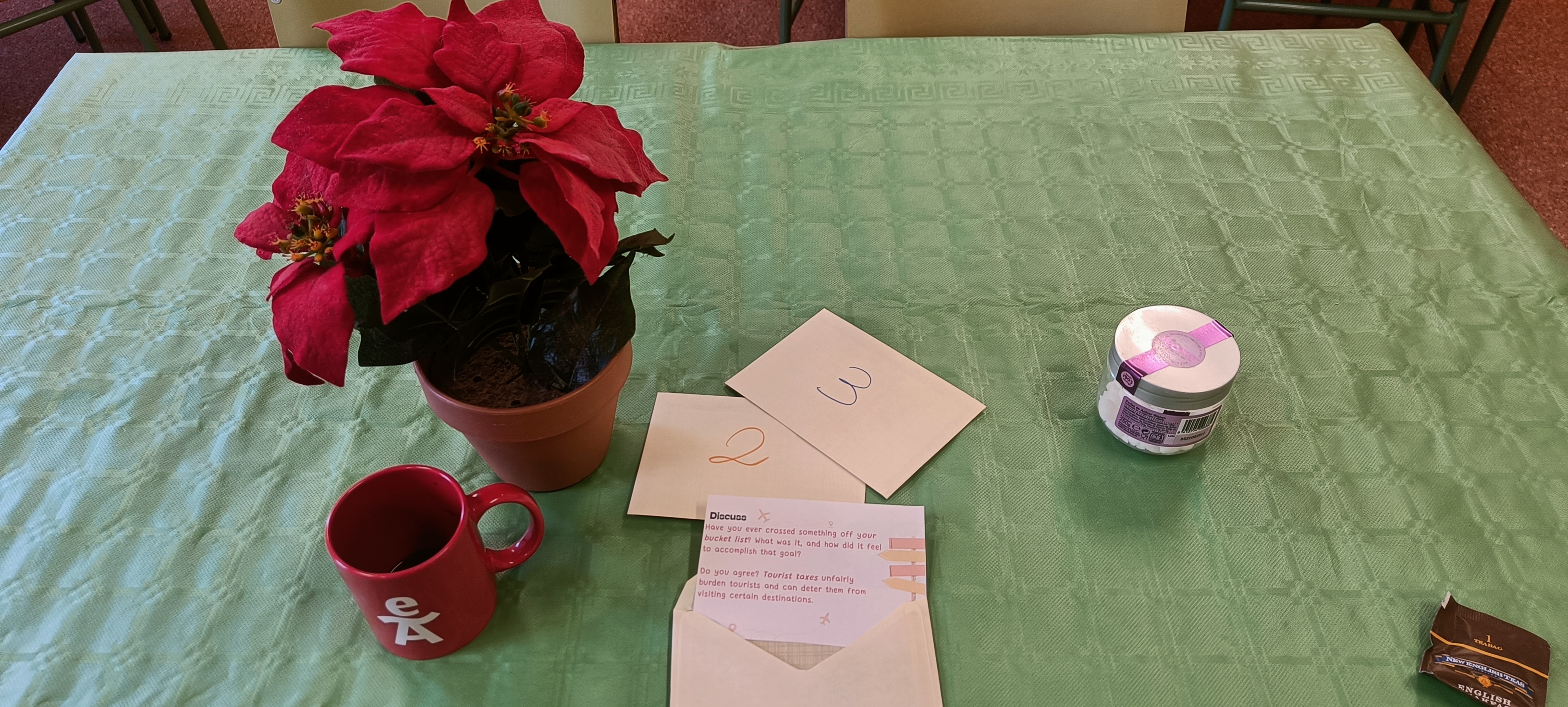Ever since experimenting this engaging strategy for boosting speaking skills and collaborative thinking at the XII Congreso Oficial de Escuelas de Idiomas held in Santiago de Compostela, I was determined to incorporate this learning/teaching approach into my classes. Even knowing that the probabilities of offering a coffee in a school environment to create the right atmosphere were scarce, I was determined to explore this strategy with my students. I am so glad I did it. It was a hit!

But what is the World Café?
The World Café is a way of facilitating group conversation. It is a powerful speaking strategy that encourages everyone to work together, share their ideas and perspectives, ask questions, and collectively come up with new insights and this, in a relaxed environment that helps students get to know each other and build community. The conversations evolve through several rounds, in which you begin a conversation by asking a question. After talking about it for about 20 minutes or so, people rotate to new rounds of conversation, talking to different people.
In summary, the reason I decided to implement this strategy was…
- students spend like about 45 minutes talking non-stop.
- for each round, students are asked to move to a different table and engage in conversation with different students.
- Students can talk in a relaxed way, share ideas and opinions and build community.
How do I set up a World Café in my class, and how can I make it fit into my lessons?
The World Café is very easy to set up. To make it work, you just need:
- Decide on a topic to be discussed. In my case, it was Travelling.
- Prepare a set of questions, topic-related, for each Round. I recommend three rounds with 2-3 questions in each round.
- Although this approach is suitable for all levels and all topics, it is particularly effective with intermediate learners and above. It is recommended to have a minimum of 9/12 students in the classroom, although it works even better with larger groups.
- Creating the right environment. You need to create an environment that encourages discussion. It is usually modelled after a café, so putting 4 classroom tables together to form a bigger table with 4 or 5 chairs per table would do the trick. Ideally, you would cover the tables in paper tablecloths. If you are going to do three rounds of questions, you will need to set up three tables, which will accommodate 12-15 students (4/5 per table). If you have more students, you will need to set up more tables, but this does not mean you will need a fourth round of questions.
- Generate the questions. You need to create the questions, specifically crafted for the specific topic you will be discussing. In my case, travelling. You can see my questions here for the three rounds I have prepared. Each of these 3 cards will be placed inside 3 corresponding envelopes, each one labelled Round 1, Round 2 and Round 3. Put the envelopes for the 3 Rounds on the tables.

- Name a host at each table. The process begins with the first of 15- minute rounds of conversation for the 4/5 students seated around the table. As it is Round 1, they will open the envelope that reads Round 1. At each table, you can name a student who will act as the host, directing the conversation and taking notes of the most important agreements. If you use a paper tablecloth, they can write directly on it.

- Second Round. At the end of the 15 minutes, people move to a different table, encouraging students to sit with different classmates. You might want the host to remain at the table and direct the second round too, or choose a new host for this Round 2. Now, they open the envelope marked Round 2 and the whole process is repeated.
- Sharing key ideas from their conversations. Finally, at the end of the three rounds, individuals are asked to share insights from their conversations with the rest of the class. Alternatively, you can ask groups to share their ideas with the class after each Round.

My personal opinion. I think my students loved the activity. I think it helps build a sense of community and offers a relaxing environment to hone their speaking skills.
Negative point: we didn’t have coffee, but we had tea.